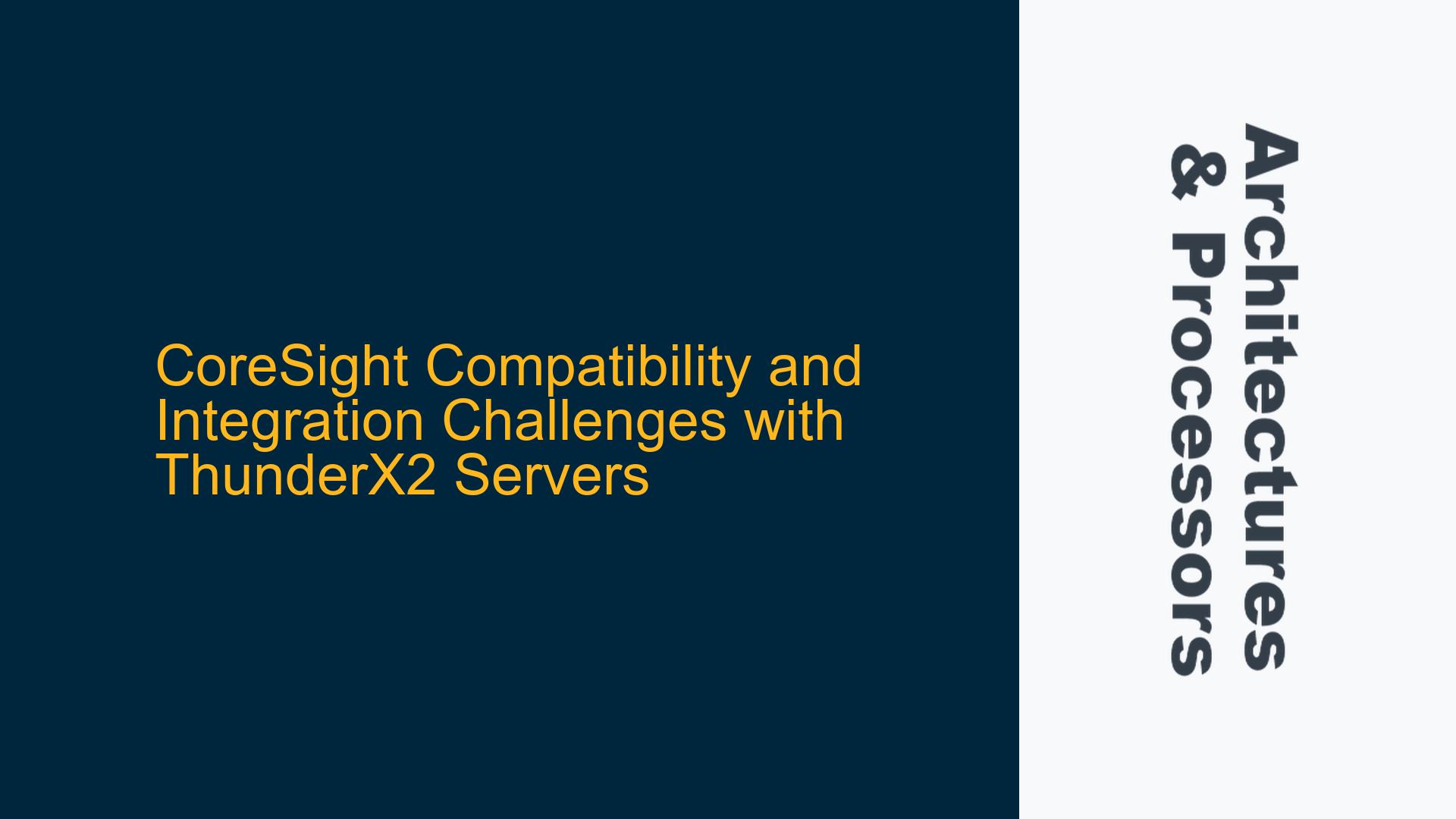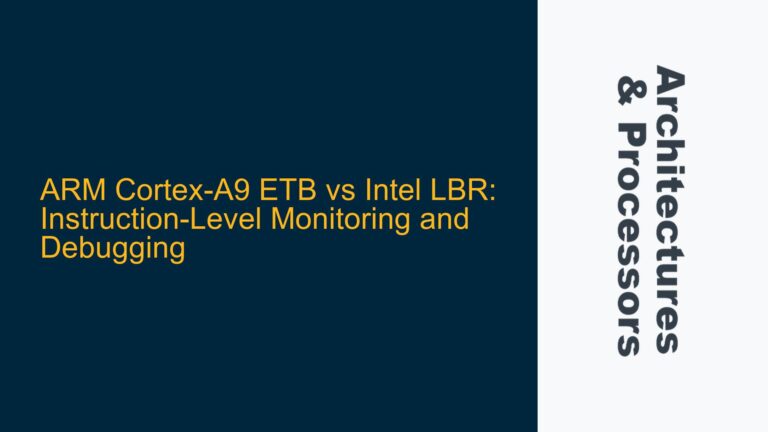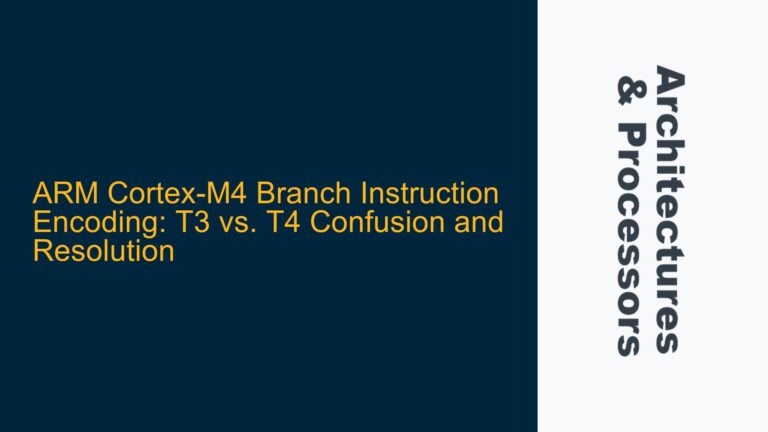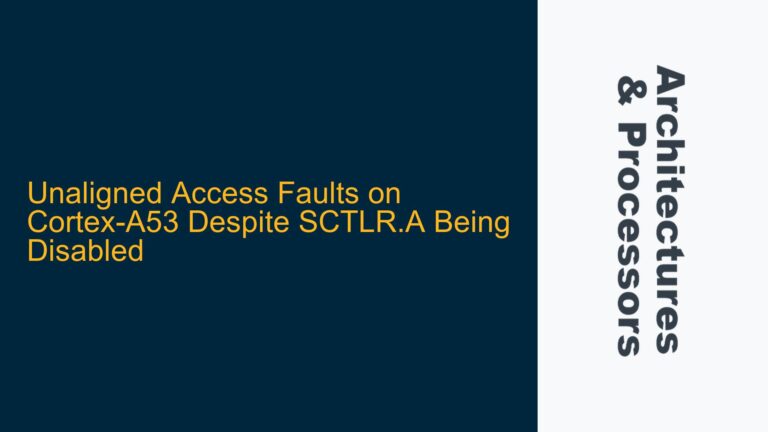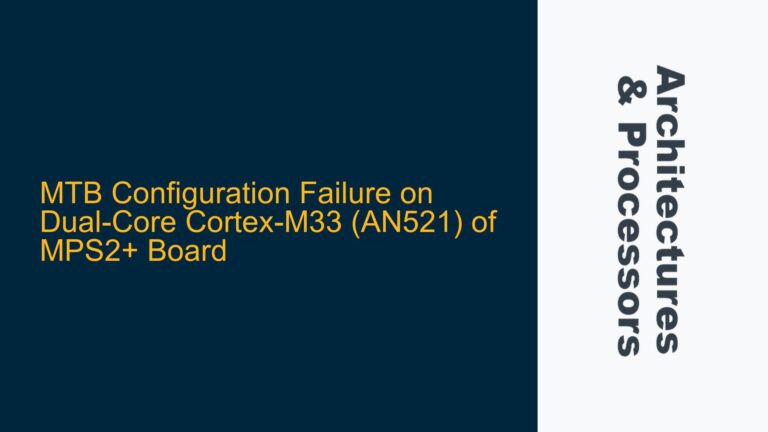CoreSight Debug and Trace Support for ThunderX2 Server Architecture
The integration of ARM CoreSight debug and trace technology with the ThunderX2 server architecture presents a complex challenge due to the differences in architectural paradigms and the specific requirements of the ThunderX2 platform. CoreSight, a sophisticated debug and trace solution, is designed primarily for ARM-based systems, while the ThunderX2 server, developed by Cavium (now Marvell), is based on the ARMv8-A architecture but with custom enhancements and server-specific optimizations. The primary concern is whether CoreSight can seamlessly interface with the ThunderX2 server’s debug and trace infrastructure, given the potential architectural mismatches and the lack of explicit documentation supporting this integration.
CoreSight provides a comprehensive suite of components for debugging and tracing, including trace sources, sinks, and interconnect fabrics. These components are designed to work within the ARM ecosystem, leveraging ARM’s AMBA protocols for communication. However, the ThunderX2 server, while ARM-compatible, incorporates proprietary elements in its debug and trace infrastructure, which may not align directly with CoreSight’s standard interfaces. This misalignment can lead to issues such as incomplete trace data, incorrect debug information, or even system instability during debugging sessions.
The ThunderX2 server’s architecture is optimized for high-performance computing and data center applications, which introduces additional complexities. For instance, the server’s multi-core, multi-threaded design requires robust trace capabilities to handle the high volume of concurrent operations. CoreSight must be able to capture and process this data without introducing significant latency or dropping critical trace information. Furthermore, the ThunderX2 server’s power management features, which are crucial for data center efficiency, may interfere with CoreSight’s ability to maintain consistent debug and trace operations across different power states.
Architectural Mismatches and Proprietary Debug Implementations
The potential causes of compatibility issues between CoreSight and the ThunderX2 server can be attributed to several architectural and implementation factors. One of the primary concerns is the difference in debug and trace implementations between ARM’s standard CoreSight components and the proprietary debug infrastructure of the ThunderX2 server. While both systems are based on the ARMv8-A architecture, the ThunderX2 server may employ custom debug registers, trace buffers, and interconnect protocols that are not fully compatible with CoreSight’s standard interfaces.
Another significant factor is the ThunderX2 server’s use of custom power management techniques, which can affect the behavior of debug and trace operations. CoreSight components are designed to operate within specific power domains, and any deviation from these domains, as might be the case with the ThunderX2 server’s power management, can lead to inconsistent debug and trace data. Additionally, the ThunderX2 server’s high-performance design may introduce timing issues that are not accounted for in CoreSight’s standard operation, leading to potential race conditions or data corruption during trace capture.
The ThunderX2 server’s multi-core, multi-threaded architecture also presents challenges for CoreSight’s trace capabilities. CoreSight must be able to handle the high volume of concurrent operations without dropping trace data or introducing significant latency. This requires careful configuration of CoreSight’s trace buffers and interconnect fabrics to ensure that they can accommodate the server’s performance requirements. However, the lack of explicit documentation or support for this specific integration makes it difficult to determine the optimal configuration.
Strategies for Ensuring Compatibility and Optimal Performance
To address the compatibility and performance challenges associated with integrating CoreSight with the ThunderX2 server, a systematic approach is required. The first step is to conduct a thorough analysis of the ThunderX2 server’s debug and trace infrastructure, focusing on identifying any proprietary elements that may conflict with CoreSight’s standard interfaces. This analysis should include a detailed review of the server’s technical reference manual (TRM) and any available documentation on its debug and trace capabilities.
Once the proprietary elements have been identified, the next step is to develop a custom integration strategy that bridges the gap between CoreSight and the ThunderX2 server’s debug infrastructure. This may involve creating custom adapters or wrappers that translate between CoreSight’s standard interfaces and the server’s proprietary protocols. Additionally, it may be necessary to modify CoreSight’s configuration to accommodate the server’s unique requirements, such as adjusting trace buffer sizes or reconfiguring the interconnect fabric to handle the high volume of concurrent operations.
Power management is another critical area that requires attention. To ensure consistent debug and trace operations across different power states, it may be necessary to implement custom power domain management techniques that align with the ThunderX2 server’s power management features. This could involve modifying CoreSight’s power domain configurations or developing custom power management scripts that ensure debug and trace operations remain stable during power state transitions.
Finally, rigorous testing and validation are essential to ensure that the integrated solution meets the performance and reliability requirements of the ThunderX2 server. This should include both functional testing to verify that all debug and trace operations are working correctly, as well as performance testing to ensure that the system can handle the high volume of concurrent operations without dropping trace data or introducing significant latency. Additionally, stress testing should be conducted to identify and resolve any potential timing issues or race conditions that may arise during operation.
In conclusion, while integrating CoreSight with the ThunderX2 server presents several challenges, a systematic approach that includes thorough analysis, custom integration strategies, and rigorous testing can help ensure compatibility and optimal performance. By addressing the architectural mismatches and proprietary implementations, it is possible to create a robust debug and trace solution that meets the demands of high-performance computing environments.
